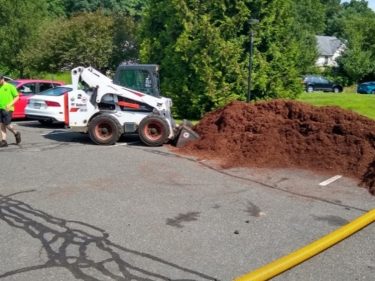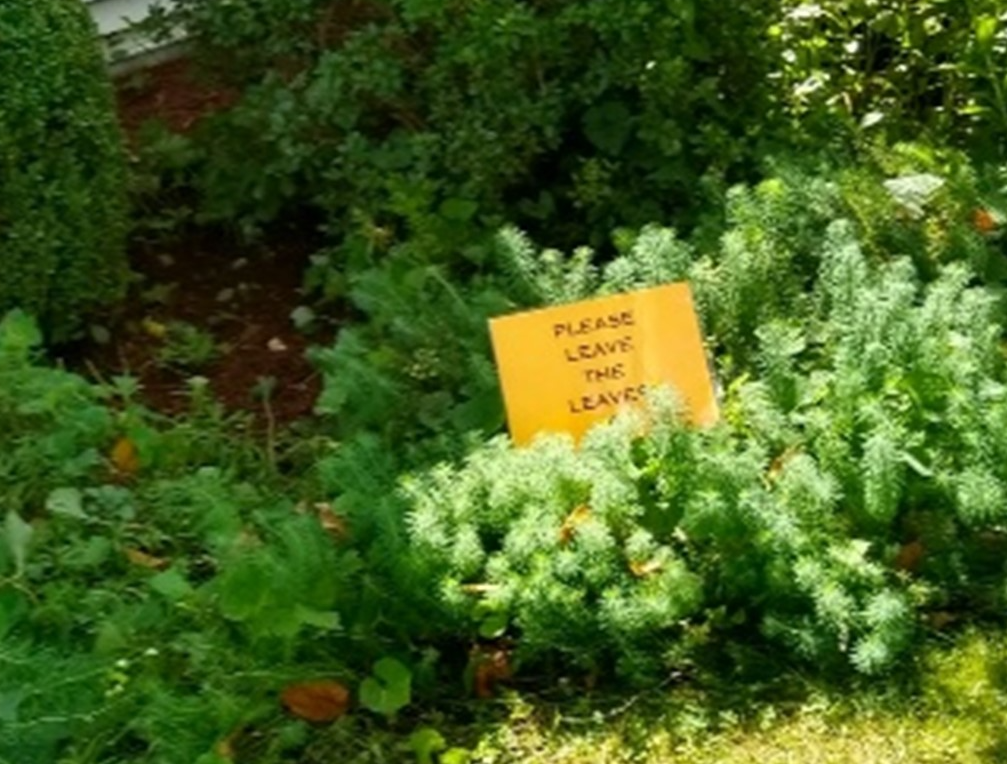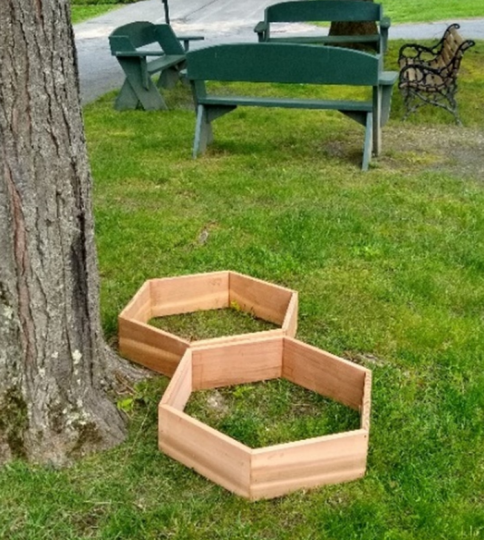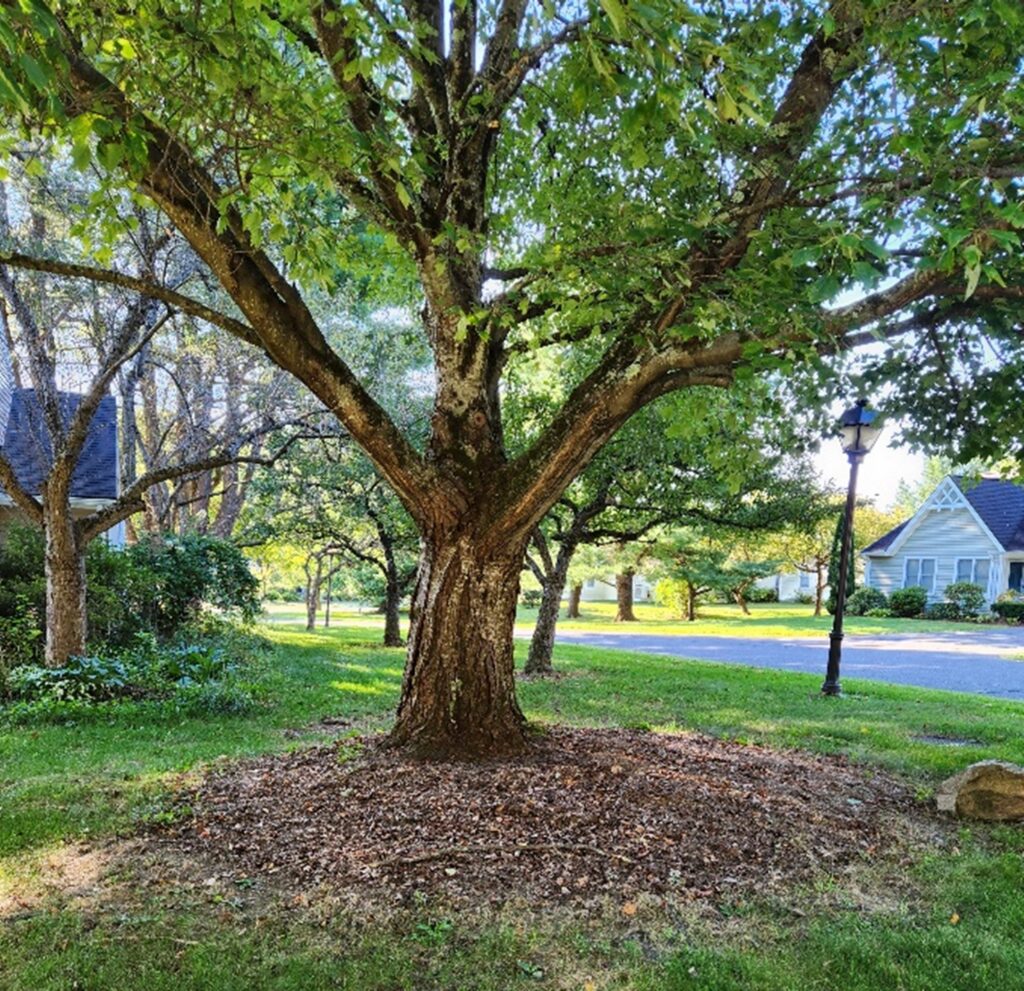By George Kriebel, Lathrop North
Until very recently in geological time, nature has always left the leaves, so life has evolved with that in mind. Leaves contribute to soil health by recycling nutrients; helping form humus; insulating root systems during the winter; suppressing weeds; keeping moisture in the ground; providing habitats for all sorts of wildlife, including soil microorganisms, pollinators, their larvæ, and predators of pests; generally serving as nature’s mulch.
Management is justifiably concerned about the safety of leaving leaves—leaves on sidewalks can get slippery in the rain, creating a hazard for falls for residents with or without canes and walkers. Less justifiable may be the concern for ӕsthetics, the notion that fallen leaves look messy. After all, beauty is in the eye of the beholder.
At this point, “leaving the leaves” is as much an aspiration as a reality, but management is listening ever more acutely, especially since leaving the leaves can save money, in addition to saving our all-important pollinators.
Consider the perversity of capitalism, one of the tenets of which is to turn a profit on what used to be available for free. First, we pay landscapers to noisily (in most cases—whatever happened to rakes?) collect the leaves to cart them away. The EPA says that yard waste, including leaves, accounts for 13% of the total municipal solid waste in the United States, contributing to landfill overcrowding and methane production. Then, we pay the landscapers to spread bark mulch, obtained from trees we cut down. At least for our landscapers, that, too, is a noisy process that fills the air with still more exhaust fumes. Where is the aesthetics in that?
Upton Sinclair wrote: “It is difficult to get a man to understand something when his salary depends on his not understanding it.”
We really cannot rely on our landscapers to necessarily do the sustainable thing.
Fortunately, residents have almost absolute say over how they manage the individual gardens around their own townhomes, and some are engaging in “garden creep,” slowly expanding their gardens 5 or 10 feet out into what used to be lawn. They then request that the landscapers leave the leaves among their plantings, thereby providing all the benefits listed above.

Bark mulch in the Lathrop North parking lot ready to be sprayed under plantings where the leaves have been carted off.

These signs are available for residents to alert landscapers to their wish for less robust groundskeeping.
On the neighborhood scale, Lathrop’s townhomes and resident government are organized around lanes, 6 on the East Campus and 7 on the North Campus, which contain anywhere from 3 to 14 townhomes. The residents of each lane muster considerable esprit, and develop a consensus for how best to maintain and beautify their lane.
And there are several ways lanes have devised to leave the leaves where they will do the most good. Peter Keilty, of Bees for All, sent the idea of “larval landings” to Doug Tallamy, of Homegrown National Park. Laval landings are modular units designed to contain the leaves that fall from trees (especially oaks, which host the most diverse assortment of pollinators). But maybe each tree can manage its own leafy cushion?

Here are two prototype larval landings on the greensward of one lane at Lathrop North, ready for this autumn’s abscission.

Another lane at Lathrop North has decided that the leaves do a reasonable job of creating their own leafy cushion for their tree.
For further investigation, consider:
- The Xerces Society: https://xerces.org/blog/leave-the-leaves
- Read this blog post about Larval Landings
- Doug Tallamy:

